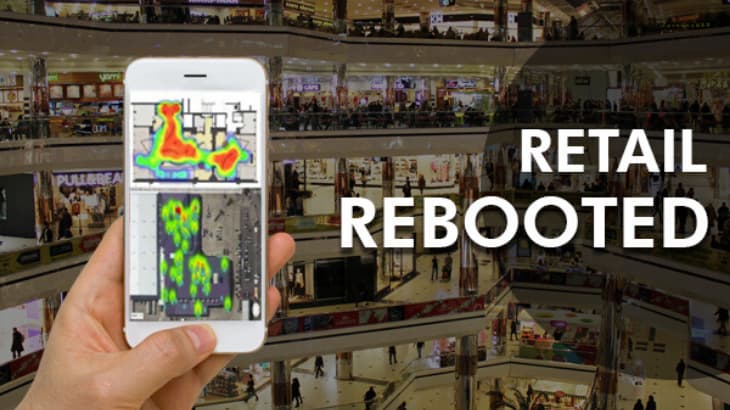Venice is the perfect place for a phase of art to die. No other city on earth embraces entropy quite like this magical floating mall. - Jerry Saltz, Pulitzer prize nominee
Quite like what has been said, technology has brought forth a change in culture and blunted the rich traditional aspects of how shopping should look, feel and be like. To understand the good behind what technology has added to the places of shopping; the discussion of evolution and boom of digital online marketplace on its offline counterpart is central.
Here’s a deeper look at few of the innovations in technology adopted by shopping malls.
Convergence of Online and Offline Commerce
Digital technology coupled with the start-up culture paved way for e-commerce revolution in India. It reshaped the consumer’s expectations and shifted the focus towards useful and entertaining customer experiences. Even with limited organised retail penetration in the Tier II and III cities, we foresee e-commerce having more takers. Very much a vice-versa effect can be seen here, as brick and mortar businesses benefit from social media and online marketing campaigns, online businesses too are benefiting from having physical stores, advertising and promotional events.
According to the Mobile Economy Report 2017, smartphone penetration is estimated to reach over 5.7 billion by 2020, a growth of over 1.9 billion from Q4 2016, creating great opportunity for retailers to provide personalised experience by converging the online and offline. The convergence has both business and social implications but requires a rethink in business models, consumer relationships, business process management and the technical infrastructure that will support and nurture the ecosystem.
Connecting and Enabling the Mall consumer
Social media is an omnipresent feature in most people’s lives. Having interesting content is key to profiting from this strategy, as posting a mall’s opening hours or a map of retail locations doesn’t exactly encourage engagement. ‘’Phoenix Market City” in Bangalore, is one such example , where they organise live concerts, talk shows and other activities every weekend and use digital social media platforms to engage and promote their activities. The result? The mall registers its highest footfalls on the days they organize such events.
Many malls also conduct online polls to understand consumer behaviour, be it what ‘store’ they’d like to see at the centre, or what movie they’d like to see screened at the mall’s cinema. Similarly, Inorbit malls in Mumbai, Bangalore and Hyderabad are undergoing renovation to create an environment for a perfect selfie, a phenomenon which has flooded over 28 crore posts on Instagram worldwide.
Technology companies like Topshop are setting up virtual fitting rooms in Mall stores across the globe. The room uses Microsoft Kinect and augmented reality to let shoppers try on clothes without going into a fitting room. A built-in camera recognises the human body and superimposes a 3D model of a garment; users can then switch clothes using simple gestures, powered by Kinect. Shoppers can also opt to upload their images directly to Topshop’s gallery as well as their own Facebook profiles. This further drive engagement and interest in the mall’s social accounts, making them more ‘real’.
Beacons and Heat Mapping Technology
Besides mobile, many retailers have also started using Beacons in their retail stores. Beacons enable retailers to send messages directly to the smartphones of their customers as they pass by the shop or an aisle where the beacon has been installed. This enables the retailer to track customers, initiate engagement and eventually convert them into sales.
Commonly mounted on walls and ceilings near store entrances or aisles, beacons use low energy Bluetooth technology to detect nearby devices and transmit messages. As a device passes by or is detected by the Beacon, digital transmitters share personalized communications/ text messages directly to the customer’s smartphone through relevant mobile apps. For example, when a potential customer enters a store, department or relevant display area, he receives a notification such as “Hello, smartwatch sale is ON, on aisle 6 with discount from 20 – 60 %. Visit now to avail the offer!”. Adding more innovation, some Beacons also create a heat map of the customers inside the shop. In such beacons, the hardware is made specifically to turn aisle interactions into visualizations and heat maps. This technology can also be integrated into other apps, allowing solution providers the chance to quickly and effectively add heat mapping software and other beacon capabilities to their offerings.
In conclusion
Malls are now open to possibilities of adapting and embracing the digital world. Until a digital world is developed in which all the senses – touch, sight, hearing, smell and taste – are engaged, there’ll always be a market for shopping malls. But how big that market is, will rely on how open the humble shopping mall is to try newer ways of doing things; not to mention, that nothing can beat an actual experience, be it the feel of a fabric, an appliance or even a virtual reality device (ironic indeed). Innovations will just add to a richer experience and not result in the demise of a shopping center/ mall.
